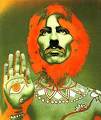U.S. farm bankers nervous about bullish outlook
 U.S. farmland prices have been firming as China's heavy purchases of the country's farm exports have fueled a boom in agriculture.
U.S. farmland prices have been firming as China's heavy purchases of the country's farm exports have fueled a boom in agriculture. Still, many veteran U.S. farm lenders are nervous about agriculture's historical tendency to boom-and-bust cycles.
"Everybody is on board with the great demand story. Sometimes that should raise a red flag," said Michael Swanson, agricultural economist with Wells Fargo & Co, top private bank lender to U.S. agriculture.
"When nobody opposes the story or raises any countervailing argument, you really have to wonder what are we missing."
Swanson and other bankers at this week's farm lending conference hosted by the Federal Reserve Bank of Kansas City pointed to several clouds on the horizon amid the bullish outlook for U.S. exporters, already the world's leading source of food and fiber from grains to cotton to meats.
From a potential farmland bubble to higher interest rates to volatility in grain, meat and cotton prices, cautious lenders appeared to still be licking their wounds from the recent boom-bust effects of the global recession.
"Everybody is in agreement the demand is out there. I think a lot of people in this room are very concerned about the volatility around that demand," Swanson said. "There are a lot of things that could upset the apple cart."
Recent surveys from Midwestern Fed banks have shown that farmland values in the U.S. grain belt, the world's most productive, steadied and began rising again in the first quarter of 2010, as farmers and outside investors bought more.
That key barometer has been joined by China's buying binge for U.S. grains in particular to boost U.S. farm prices. China, which already consumes more than half of U.S. soybean exports, recently bought its first U.S. corn in four years. This week it also snapped up 80,000 tonnes of U.S. soyoil, boosting prices.
U.S. Agriculture Secretary Tom Vilsack on May 20 said thanks to China buying more than $10 billion in farm goods in the first half of 2010. U.S. exports in the period set a record high of $59 billion and will be revised up for the year.
CLOUDS ON THE HORIZON
But economists and lenders say that's not the whole story.
"The bullish side of agriculture is growth through increased demand, but we've always got the problem of getting overzealous, building for anticipated demand," said Jim Farrell, top exec of Farmers National, the largest U.S. farm management firm. "An example of that is the ethanol industry. We had a good ethanol industry then got bullish and built and built. We suffered...that industry is starting to recover."
Kansas City Fed president Thomas Hoenig, who has argued for higher U.S. rates now, told the ag bankers that he was watching the firming farmland values carefully.
"Following the decade of the 1970s into the early 1980s, I saw land values accelerate and I saw banks make loans on the assumption that land values could only go up," he said.
"That was just before all the markets collapsed, when 350 banks failed in this region alone," Hoenig said. "When I hear people saying that land values are again increasing rapidly and we are getting the phone calls from the investors -- that's when I get really worried."
Douglas Stark, chief executive of Omaha-based Farm Credit Services of America, said lenders must learn to better manage their exposure to volatile grain and livestock prices.
Soaring margin costs tied to futures market hedging for grains in particular in 2007-2008 hit lenders hard.
"Volatility is twice what it used to be. It's not the impact of the averages that bothers me as a lender, it's the impact of the exception. As lenders we're looking at those dips and tails and do we have the financial capacity and wherewithal to really see through these dips and tails," he said.
Numerous lenders also expressed concern about inflation pressures and likely interest rate increases ahead.
Given the current trend in LIBOR interest rates, factoring in higher inflation, a normal yield curve "I've got long-term rates that are double-digits," Michael Boehlje, a Purdue University economist, told the lenders. "I think we need to prepare ourselves for that kind of potential."





























0 Comments:
Post a Comment
<< Home